The jihadist movement IS (Islamic State), also formerly known as ISIL, ISIS, DAESH, has consolidated its hold on the conquered territories in Syria and Iraq and tries to advance further in both countries.
In Iraq, IS seized control of the Mosul dam, Iraq’s biggest hydroelectric dam, after Kurdish forces fled without a fight. The jihadists can now threaten downstream regions with flooding or withhold water for farms, and they can cut off electric power in wide areas.
There’s been also fierce fighting around two dams that are crucial for the capital’s water supply: At Haditha, west of Baghdad, and at the Hamrin lake to the north. Damage to either dam could create severe problems in the capital.
In May IS already emptied a series of irrigation channels in the Abu Ghraib area, displacing 12,000 families, submerging hundreds of houses and at least four schools. Wells in the flooded areas are contaminated, which increases the shortage of drinking water and the danger of water-born diseases.
In addition to the Mosul dam IS also seized the Ain Zalah oil field (adding to four other fields already under its control that provide funding for military operations) and three towns, including the predominately Kurdish town Zumar.
IS advances in Syria
Reenergized by the Iraqi success and strengthened by tanks and artillery captured from the Iraqi army, IS started an offensive in Syria with the assault on the regime-held al-Shaer gas field in the Palmyra desert of Homs province, killing 270 Syrian soldiers.
IS then launched a double offensive targeting Division 17 in Raqqa and Regiment 121 (Melbiya Regiment) in Hasakah. The Division 17 base in Raqqa’s northern countryside was considered the last stronghold of the Syrian army in the region and the most heavily fortified after the Tabqa military airport.
The attack on Division 17 started as usual with two suicide cars bombers speeding toward the perimeter of Division 17’s base. The cars were hit by fire from the base and exploded prematurely but the following attack of some 700 IS-fighters nevertheless overran the garrison with 300 soldiers. Syrian warplanes provided air support by bombing the attackers, while helicopter gunships targeted IS headquarters and other sites inside Raqqa city, but the air support couldn’t stop the attackers.
In Hasaka province, IS succeeded in overrunning part of a base belonging to Regiment 121. At least a dozen soldiers died there after the Islamists attacked from three sides.
IS also tries to capture the Syrian Kurdish enclave at Koban (Ayn al-Arab), where some 500,000 Kurds are concentrated, many of them refugees from other parts of northern Syria.
In only three weeks nearly 1000 Syrian soldiers were killed in fighting with IS. Among the dead were Gen. Samir Aslan, the head of military intelligence in Raqqa province, and Gen. Miziad Salameh, the commander of Regiment 121.
At the moment the Syrian Army is fully engaged in Aleppo. It has taken control of Sheikh Najjar Industrial City (located 10 kilometers northeast of Aleppo) and nearly completed the encirclement of Aleppo’s eastern districts, which at the moment are still under control of insurgent groups.
The battle in Sheikh Najjar Industrial City was not easily won, as the defenders moved around in an extensive system of kilometer long tunnels and hundreds of fighters blew themselves up with suicide belts to stop the Syrian soldiers advance. The losses of the Syrian army were huge.
The battle for the eastern districts of Aleppo will be as fierce because the rebels know, that if Aleppo falls they will be finished and IS will be the only force left to oppose the Syrian army.
The harsh rule of IS
All in all, some 600,000 Iraqis have fled from IS and are now crammed into temporary shelters, schools, and churches.
IS captured and summarily executed nearly thousand student cadets at the Speicher Base in Tikrit.
After taking Mosul, IS issued a decree ordering the people to send all unmarried women to “jihad by sex.” Another decree ordered all girls and women in and around Mosul to undergo female genital mutilation.
IS fighters were going from door to door in search for unwed women who they could marry. A Christian father who watched his wife and daughter get brutally raped by IS militants after not being able to pay the jizya tax killed himself under the weight of the trauma.
IS ordered government workers in the occupied territories to stop giving food rations to Christians and Shiites.
Not only the Christians and Shiites in Mosul, but also the 50,000 Assyrian inhabitants of nearby Baghdede (Qaraqosh) fled from IS. The jihadists systematically looted the abandoned poultry farms of the Assyrian Christians and took away livestock and equipment worth 8 million US$.
IS either destroyed or occupied all 45 Christian Institutions in Mosul. They destroyed ancient tombs, shrines, cemeteries, statues, libraries, and thereby did immeasurable damage to Iraq’s cultural heritage. IS fighters burnt down a 100 year old library in Tal Afar. Built by a Shia scholar, it was the oldest and largest library of its kind in the city. It contained thousands of rare books and manuscripts.
This barbarity is not unexpected, because IS has committed countless atrocities in the northern Syrian province of Raqqa where it rules since March 2013. Public executions are a regular weekly occurrence in Raqqa city. Some victims have been crucified and at least two women were stoned to death because of alleged adultery. Other women have committed suicide after being raped or forced into short time marriages with IS-fighters.
IS has tortured and executed many citizens accused of sympathizing with the government or with rival rebel groups. The bodies of slaughtered prisoners are hung on hooks, the heads of beheaded victims are put on sticks and paraded through the streets.
Christians are required to pay the jizya tax and are not allowed to publicly wear crosses, pray in the presence of Muslims, or repair or renovate places of worship.
To keep the population in the conquered Syrian territories quiet IS takes advantage of their huge funds, which allows them to re-open bakeries, re-supply flour mills, and re-stock empty wheat silos in the regions under its control. This is no small matter because after three years of war and a persistent drought there is a national bread shortage in Syria. Fields and farming assets have been destroyed, wheat harvest for 2014 will be some 1.97 million tons, nearly 20 percent below last year’s harvest, and 38 percent below the five-year average (2009-13).
The method of winning hearts and minds by food distribution though isn’t always sufficient to counterbalance the barbaric and inhuman rule of IS and recently members of the Shueitat tribe in Syria’s oil-rich eastern province of Deir el-Zour forced IS fighters to withdraw from the villages of Kishkiyeh, Abu Hamam, and Granij.
How it all began
IS (ISIL, ISIS, DAESH) emerged from various predecessor organizations like the Mujahideen Shura Council, the Islamic State of Iraq (ISI), and Al-Qaeda in Iraq (AQI). The insurgent groups Jaysh al-Fatiheen, Jund al-Sahaba, Katbiyan Ansar Al-Tawhid wal Sunnah, Jeish al-Taiifa al-Mansoura, and a number of Iraqi Sunni tribes were also affiliated.
Al these formations and splinter groups received funding from the Gulf Monarchies, especially from Saudi Arabia and Kuwait.
As stated before on this blog, many radical Islamic movements have colluded with the West and received money, weapons, logistic help, military training, and intelligence support by spy agencies.
Afghanistan’s muhajideen (Charlie Wilson’s war), the Taliban (via Pakistan’s ISI), Al-Qaeda (via Saudi Arabia), the Muslim Brotherhood (via the CIA and Qatar), Turkeys Gulen movement (via personal ties of Fethullah Gulen with US politicians), Boku Haram (via wealthy donors from the Gulf), are examples.
But IS is not only supported by the West, it is most likely a special creation of the West, designed to encircle and weaken Iran by destabilizing Syria, Iraq, and Lebanon. Saudi Arabia is bankrolling it, Turkey provides logistic support and a deployment zone, the USA coordinates and helps with intelligence from spy satellites, surveillance drones, and CIA/NSA data gathering.
There is clear and undeniable proof for this assumption:
All of the Islamists moves fit perfectly into Western plans (to get rid of Assad and Maliki, to weaken Iran).
Turkish authorities give IS a free pass and organize weapons supplies. Three trucks full of military equipment, which were intercepted and searched in January by Turkish police but could carry on because they were under the protection of the MIT (Turkeys spy agency), were reportedly handed over to IS.
There is a surprising and unusual large number of Turkish nationals in IS ranks.
When IS captured Mosul, the Turkish consulate there became its interim headquarter and the 49 consulate workers were taken hostage — at least that is what the Turkish government said. 28 Turkish truck drivers who were transporting diesel to Mosul were also abducted.
After the (so called) abduction a media blackout was imposed and coverage stopped. Turkish Prime minister Erdogan refrained from any criticism of IS and called it (and still calls it) an organization. Considering all the signs it seems more than likely that the consulate staff and also the (nominally) abducted truck drivers now work for IS on behalf of the Turkish authorities.
The USA has not heeded Iraq’s plea for help against IS and just sent some special troops to protect US installations. Only Iran is supporting the Iraqi army against IS with aircrafts (Russian SU-25), pilots, military advisers, trainers, and combat equipment.
Western media have been mostly quiet and abstained from reporting about the atrocities of IS-fighters.
The precise military operations and surprise attacks at the weakest points in the enemy frontline can only be explained by superb intelligence provided with the help of US spy satellites and surveillance drones. The USA launches dozens of spy satellites every year equipped with high resolution cameras which can identify objects down to 20 cm. The satellites have also infrared sensors which can even detect isolated small arms fire.
The information from satellites and drones is most likely analyzed in the US and transferred to the US embassy in Ankara. Ambassador Francis J. Ricciardone is allegedly leading a control room there where the exact military operations of IS are designed.
No blowback this time
Haven’t the imperial strategists not learned from the examples of the Taliban and Al-Qaeda, that supporting terrorists can eventually backfire? Don’t they fear a blowback in the form of experienced and battle hardened Western-born Islamists coming back home to wreak havoc there? Don’t they fear that members of IS or other terror organizations will infiltrate Israel and blow themselves up in the midst of shoppers on the avenues of Tel Aviv, West Jerusalem, Haifa?
The strategists have learned their lessons indeed and they came down with an ingenious solution to the “blowback-problem.” Their plan was brilliant, sophisticated and yet easy to implement:
Careful reinterpretations of Quran verses and Islamic history by Saudi Arabian Islamic scholars have achieved, that today’s jihadist movements have no interest in the Israeli-Palestinian conflict and for the time being regard it as irrelevant. The jihadists fight instead against Arab governments and populations which they regard as apostates. Apostates are Shias, Sufis, and all other muslims, who don’t follow the extremists own rigid interpretation of the Quran.
Apostasy is punishable by death or imprisonment until repentance.
A reformed Al-Qaeda has followed this course already since years, and now IS fights a brutal war with suicide attacks and massacres across swathes of Iraq and Syria in an effort to purify these nations through killings and population displacement.
And it doesn’t stoop there. In its self-proclaimed status as a caliphate, IS claims religious authority over all Muslims across the world and aspires to bring the Muslim-inhabited regions of the world under its direct political control.
IS is not mobilizing the people under its control in opposition to the Israeli military operations in Gaza and IS propagandists have issued various video clips and tweets explaining their lack of assistance to the Palestinians. One tweet stated, “The Hamas government is apostate, and what it is doing does not constitute jihad, but rather a defense of democracy.” Another tweet said, “Khaled Meshaal: Hamas fights for the sake of freedom and independence. The Islamic State: it fights so that all religion can be for God.” (Meshaal is head of Hamas’ political bureau).
Salafists believe that jihad must be performed under a legitimate leadership. This argument is advanced through the “banner and commander” concept, which holds that whoever undertakes jihad must follow a commander who fulfills the criteria of religious and political leadership and has raised the banner of jihad. Given that there is neither a legitimate leader nor a Salafist approved declaration of jihad in Palestine, fighting there is forbidden.
For IS, the purification of Islamic society takes priority over the combat against non-Islamic societies. Should the opportunity for military action present itself in the Palestinian territories, Salafists would first fight Hamas and other factions deemed in need of “cleansing” from the land.
If IS is no danger to Western countries, what about Saudi Arabia and the other arab monarchies? They will be in all likelihood also seen as apostates by the Islamist hardliners and at one point will catch their attention. The main organizers of IS, Prince Bandar bin Sultan and Prince Abdul Rachman, have maybe placed their confidants at key positions inside the organization or constructed a financial “kill-switch,” but extensive looting in the conquered territories and imposed taxes have made IS fairly independent.
IS could become a monster which turns against its Saudi Arabian creators, but that is not a problem of the West. The Imperium has no friends, only allies, and it will not hesitate to throw even the closest ally under the bus (as seen in Europe now), if such a move appears to be necessary or expedient.
Savagery works (as it has throughout history)
There is no doubt that IS is the biggest gathering of bloodthirsty psychopaths the world has seen for a long time. Even the jihadist-friendly UN bureaucrats had to concede that executions, rape, and forced recruitment of children by IS may amount to war crimes. A particular UN-report stated:
“ISIL and associated armed groups have also continued to… perpetrate targeted assassinations (of) community, political, and religious leaders, government employees, education professionals, health workers… sexual assault, rape and other forms of sexual violence against women and girls, forced recruitment of children, kidnappings, executions, robberies.”
A recent IS propaganda video shows how truckloads of young men are led to their slaughter. They are beaten and forced to beg forgiveness and swear fealty. After they do so, they are taken into a field, made to lie down, and executed one by one.
IS fighters are determined, fearless, ready to self-sacrifice. They die in huge numbers, but the ranks of IS are easily filled from the vast pool of desolate, untrained, and unemployed young Arab men, who feel deprived, unwanted, useless, and for which jihad appears to be the only possible way to be socially accepted, gain stature and prestige among their peers, and fulfill their sexual urges.
IS fighters are ready to die — 72 houris are waiting in heaven.
In respect to history
It is not the first time in human history that a combination of religious indoctrination and male sexual aggression mobilizes energies that ruling elites can harness for their sinister aims. The Muslim conquests in Europe and the Middle East (culminating in the victory at Yarmouk), the Crusades, the Muslim invasions of India, the French religious wars, the Thirty Years’ War (with the stunning invasion of Germany by Gustavus Adolphus), the partition of India and the Indo-Pakistani wars, the Lebanese Civil War, the Northern Ireland conflict (The Troubles), the Nigerian Civil War, the Second Sudanese Civil War, are noteworthy examples.
One cannot blame all destruction and human suffering on religion and to put things into the right perspective one has to acknowledge that World War I (20 million casualties), World War II (40 million casualties), and the Mongol conquests (40 million casualties) were not religious wars.
The Mongol invasions and conquests under Genghis Khan and Khublai Khan were one of the deadliest military campaigns humanity ever saw, depopulating towns and even whole regions, thereby causing significant and long lasting changes in the demographics of Asia. But the Mongol rulers, despite their unfathomable cruelty, were not interested in proselytizing, they would let their subjects (the ones who survived the onslaught) keep their religion (Shamanism, Buddhism, Taoism, Islam, Christianity) and they also tolerated the cultural traditions of the subjugated populations.
One cannot blame everything on religion and yet, the Muslim invasions of India, regarded by historians as the most bloody conflict ever, resulted in 80 million casualties.
IS has a long way to go till they match this body count, but they are right on track.
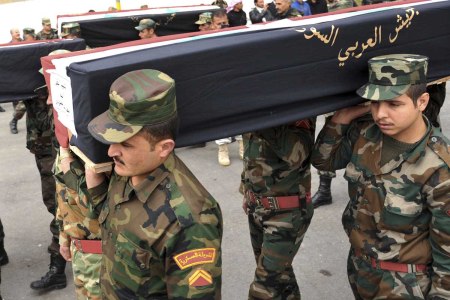
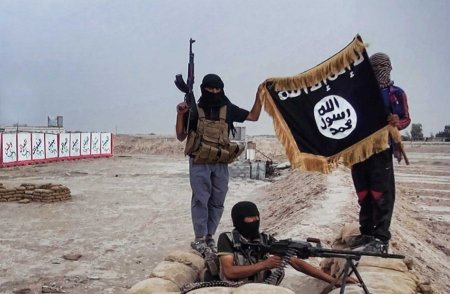
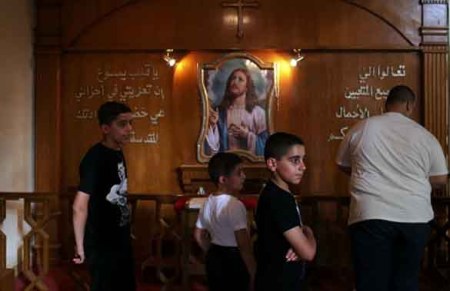
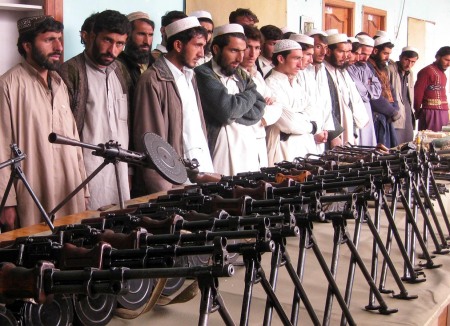
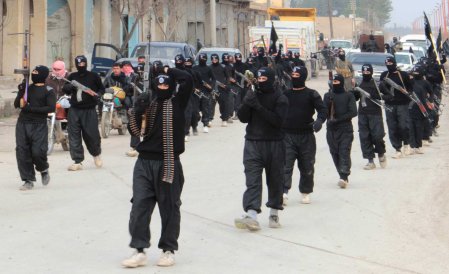
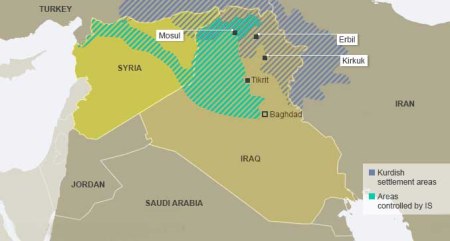
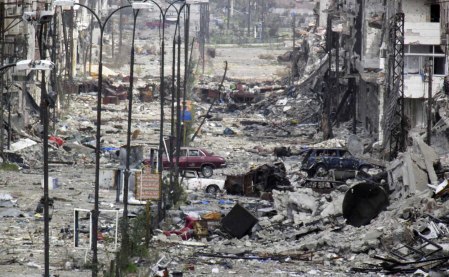
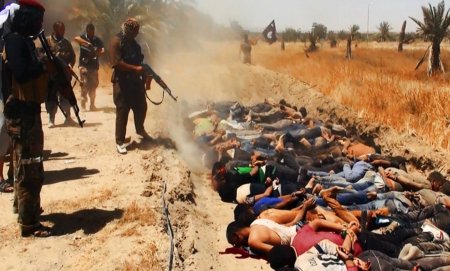

Keine Kommentare:
Kommentar veröffentlichen